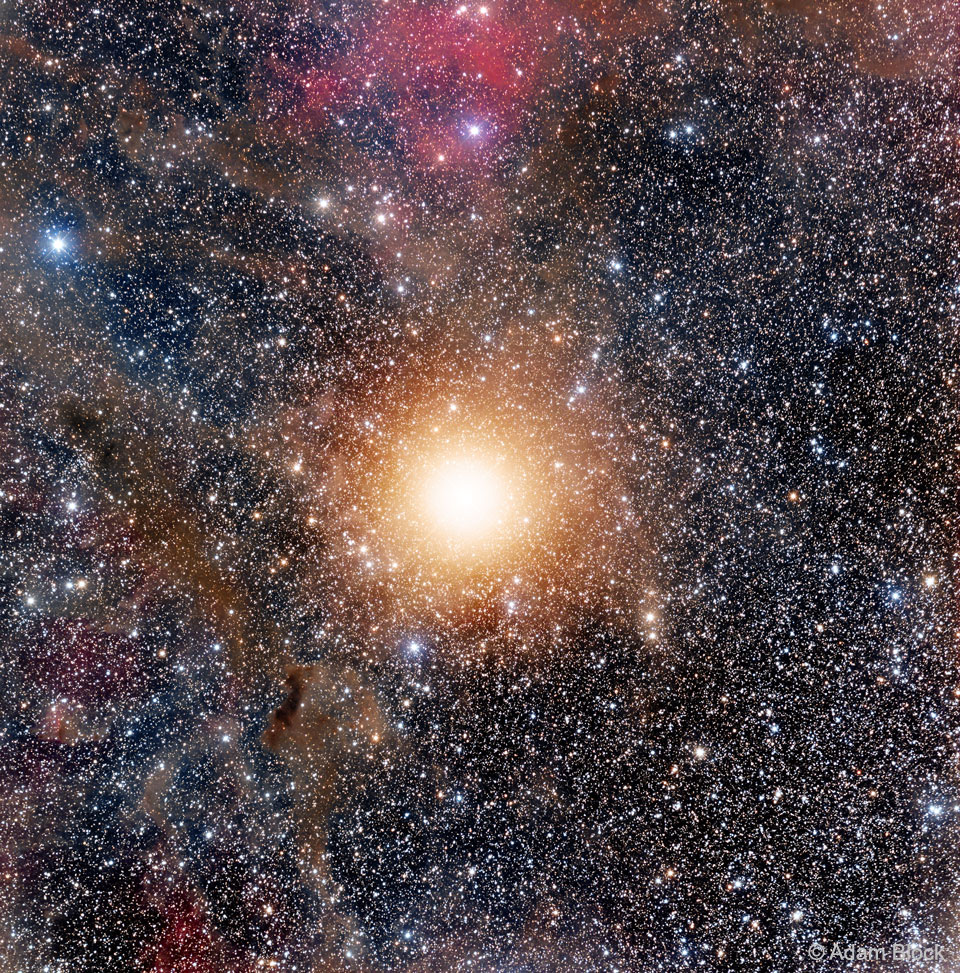2020 May 11
Behind Betelgeuse
Image Credit & Copyright: Adam Block, Steward Observatory, University of Arizona
Explanation: What’s behind Betelgeuse? One of the brighter and more unusual stars in the sky, the red supergiant star Betelgeuse can be found in the direction of famous constellation Orion. Betelgeuse, however, is actually well in front of many of the constellation’s other bright stars, and also in front of the greater Orion Molecular Cloud Complex. Numerically, light takes about 700 years to reach us from Betelgeuse, but about 1,300 years to reach us from the Orion Nebula and its surrounding dust and gas. All but the largest telescopes see Betelgeuse as only a point of light, but a point so bright that the inherent blurriness created by the telescope and Earth’s atmosphere make it seem extended. In the featured long-exposure image, thousands of stars in our Milky Way Galaxy can be seen in the background behind Betelgeuse, as well as dark dust from the Orion Molecular Cloud, and some red-glowing emission from hydrogen gas on the outskirts of the more distant Lambda Orionis Ring. Betelgeuse has recovered from appearing unusually dim over the past six months, but is still expected to explode in a spectacular supernova sometime in the next (about) 100,000 years.
Tomorrow’s picture: little harp meteors
参宿四的后方
影像提供与版权: Adam Block , Steward Observatory, University of Arizona
说明: 参宿四的后方有什么?位在天空著名猎户座方向的红超巨星参宿四,是地球天空中较明亮和行为较怪异的恒星之一。其实,参宿四位在猎户座许多亮星的前方,也在更广袤的猎户分子云复合体的前方。量化来说,光从参宿四传到我们这里大约走上700 光年,从猎户大星云及周围的尘埃和气体传过来,大约要用1,300年。除了最大型的望远镜之外,在其他的望远镜里,see参宿四只是个光点,不过因为望远镜和地球大气 天生的散焦作用,在影像里它晕成圆碟状。在上面这幅长曝光主题影像里,在参宿四的后方,可见到数以千计的银河背景恒星、猎户分子云内的黝黑尘埃、以及位在更远的觜宿一环状星云边缘的氢气之泛红辐射。 参宿四已从过去6个月中的不寻常变暗现象里复原,不过,它还是预期会在接下来的100,000年内,发生壮观的超新星爆炸。
明日的图片: little harp meteors







